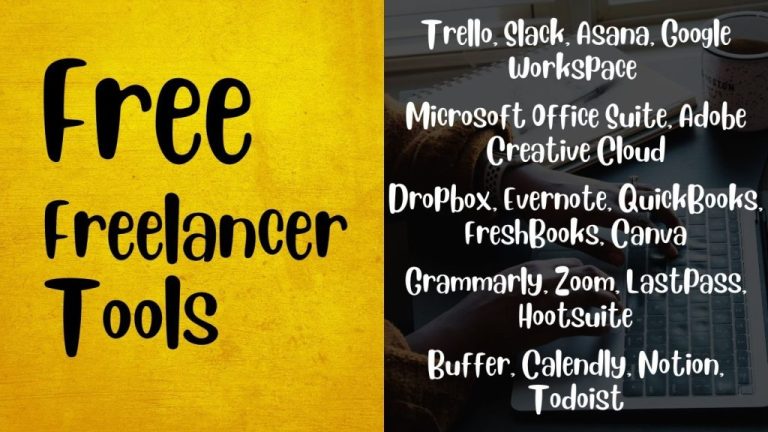Digital Marketing Plan Strategy in 14 Steps for #Growth #Success #Marketing
Digital Marketing Plan Strategy: 14 Steps to Win Big
Introduction: Why Every Business Needs a Digital Marketing Plan Strategy
Every success story in today’s business world begins with a Digital Marketing Plan Strategy. Without it, even the brightest idea drifts like a boat without oars—floating, but never really moving toward the shore. I still remember a friend who launched his boutique clothing brand with great enthusiasm, pouring his savings into ads on every platform he could think of. The result? Noise without direction. Customers trickled in, but sales never scaled because he lacked a cohesive plan.
This is what happens when marketing efforts scatter like autumn leaves in the wind—colorful, perhaps, but useless without roots. A strategy is not simply a roadmap; it is the heartbeat that pumps purpose into each campaign, connecting goals, people, and results.
In this guide, we’ll walk step by step through a framework that not only tells you what to do, but also how to do it in a way that resonates, converts, and grows. And yes, I’ll weave in real-world examples, insights, and even opportunities for tools and platforms that can amplify your efforts—many of which offer affiliate rewards or free trial signups worth considering.
So let’s start building the kind of strategy that doesn’t just whisper online, but sings.
Step 1: Define Clear Marketing Goals
A Digital Marketing Plan Strategy without goals is like setting out on a journey without knowing the destination. Imagine getting into a car, driving for hours, only to realize you never decided where you were going. That’s how most brands waste money on ads and content.
The first step is to create SMART goals—Specific, Measurable, Achievable, Relevant, and Time-bound. For example:
- Increase email subscribers by 25% in six months.
- Generate 200 qualified leads per month through LinkedIn campaigns.
- Achieve a 5% increase in organic website traffic quarterly.
Each of these goals becomes the compass for your campaigns.
💡 Affiliate Angle: This is where project management platforms like Monday.com or analytics tools like SEMRush (often available with affiliate programs) fit in perfectly. By tracking your goals through such tools, you not only streamline performance but can also recommend them to peers and earn commission.
Subheading: Setting SMART Objectives
Think of SMART goals as the scaffolding of your digital empire. Without them, the bricks collapse under their own weight.
Subheading: Aligning Goals with Business Vision
Your strategy should never live in isolation. If your business vision is “become a trusted eco-friendly lifestyle brand,” then every campaign—whether blog posts or PPC ads—should echo that vision.
Step 2: Identify and Understand Your Target Audience
The most beautifully crafted Digital Marketing Plan Strategy will fail if it speaks into the wrong ears. Imagine delivering an opera performance in a football stadium where everyone came for the match. Right audience, wrong message.
Start with building buyer personas—semi-fictional characters based on real data. Go beyond demographics. Explore behaviors, motivations, pain points, and purchase triggers. For instance, if you’re selling organic coffee, your ideal customer might not just be a “25–40-year-old urban professional.” Instead, they may be eco-conscious, value morning rituals, and care deeply about sustainability.
Subheading: Customer Personas & Segmentation
Use surveys, interviews, or social media insights to segment your audience. Platforms like Typeform or Google Forms are easy entry points, and yes—they come with affiliate-friendly links.
Subheading: Audience Pain Points & Needs
Ask yourself: what keeps my customer awake at night? If you sell software, maybe it’s workflow inefficiency. If you sell fitness coaching, maybe it’s lack of confidence. Address those pains directly, and watch your campaigns transform from generic ads into empathetic solutions.
Step 3: Choose the Right Digital Marketing Channels
One size does not fit all in digital marketing. A Digital Marketing Plan Strategy that works wonders for B2B SaaS might flop for a fashion startup. Choosing your channels wisely is like choosing the right battlefield—victory depends on terrain.
Subheading: Paid vs. Organic Channels
Organic channels (SEO, content marketing, social media) build trust over time. Paid channels (Google Ads, Facebook Ads, influencer partnerships) give you immediate visibility. The trick? Balance them. Think of organic as planting seeds and paid as buying fruit at the market—you need both to thrive.
Subheading: Matching Channels to Buyer Journey
If your customer is in the awareness stage, they’re more likely to read blog posts or social media snippets. At the decision stage, they might need case studies or demo offers. Tools like HubSpot help map content to customer journeys, and yes—its affiliate program is robust for marketers.
💡 Affiliate Angle: Promoting ad management platforms like ClickFunnels or Unbounce can serve as additional revenue streams while genuinely helping your readers optimize campaigns.
Step 4: Craft a Compelling Content Strategy
Content is the soul of a Digital Marketing Plan Strategy. Without it, your channels become empty vessels. But crafting content is not about flooding the internet with generic posts—it’s about telling stories that resonate, inform, and inspire action.
Subheading: Content Formats That Engage
Not every audience consumes content the same way. Some love blog posts, others binge on YouTube, while a third group scrolls Instagram reels at midnight. Mix formats:
- Blog articles for authority
- Videos for emotional connection
- Infographics for quick value
- Podcasts for intimate storytelling
Subheading: Repurposing Content Across Platforms
A single webinar can be repurposed into blog snippets, Instagram stories, LinkedIn carousels, and an email drip campaign. Repurposing ensures your content works harder than you do.
💡 Affiliate Angle: Recommending tools like Canva Pro, Grammarly Premium, or Jasper AI is natural here—they simplify creation and come with attractive commissions.
Step 5: Optimize for Search Engines (SEO)
A Digital Marketing Plan Strategy without SEO is like opening a beautiful shop in the middle of a desert. People must be able to find you. SEO is the bridge between intention and discovery—the science of being where your customers are already looking.
Subheading: On-Page SEO Essentials
On-page SEO is your storefront display. It includes keyword-rich titles, meta descriptions, headers, and internal links. A blog post about “organic skincare” should not only use the keyword but also answer related questions like “best routines” or “eco-friendly packaging.”
Subheading: Technical & Off-Page SEO Basics
Off-page SEO is about reputation—backlinks from trusted sites act like word-of-mouth referrals in the digital world. Meanwhile, technical SEO ensures your site loads fast, is mobile-friendly, and doesn’t frustrate users.
💡 Affiliate Angle: SEO tools like Ahrefs and SEMRush offer affiliate programs. Recommending them adds value while creating a passive revenue stream.
Step 6: Implement Social Media Marketing
A Digital Marketing Plan Strategy that ignores social media is like a band refusing to play in public. Social media is where people laugh, argue, shop, and discover. Done right, it transforms a faceless brand into a familiar friend.
Subheading: Platform-Specific Best Practices
- Facebook: Great for community groups and ads.
- Instagram: Visual storytelling through reels and carousels.
- LinkedIn: Ideal for B2B thought leadership.
- TikTok: Raw, authentic, and creative engagement.
Subheading: Building Engagement & Community
The secret is not shouting louder but listening better. Reply to comments, run polls, ask questions. Engagement is the modern currency of trust.
💡 Affiliate Angle: Tools like Buffer or Hootsuite help schedule content across platforms and carry affiliate options for marketers.
Step 7: Leverage Email Marketing for Conversions
Despite being one of the oldest channels, email remains the most profitable. A Digital Marketing Plan Strategy without email is incomplete because email nurtures relationships quietly but powerfully, like letters between friends.
Subheading: Segmentation & Personalization
Imagine receiving a birthday greeting from your favorite brand, complete with a special offer. That’s the magic of personalization. Segment lists by behavior—recent buyers, cart abandoners, newsletter-only subscribers—and speak to them individually.
Subheading: Crafting High-Converting Campaigns
Strong subject lines, concise copy, and a clear call to action are the heart of email marketing. Don’t just say “Buy Now.” Try, “Claim Your Free Bonus Before Midnight.”
💡 Affiliate Angle: Platforms like ConvertKit, MailerLite, or GetResponse offer strong affiliate programs and are natural recommendations here.
Step 8: Incorporate Paid Advertising (PPC)
Paid ads, when layered into a Digital Marketing Plan Strategy, act like rocket fuel. They can amplify reach overnight—but without precision, they can also burn through your budget just as fast.
Subheading: Google Ads Strategy
Google Ads meet people at the very moment of intent. Someone searching for “best running shoes for flat feet” is a customer knocking at your door. Make sure your ad copy reflects their urgency and need.
Subheading: Social Ads ROI
Social ads—on Facebook, Instagram, or TikTok—allow hyper-targeting. You can target by age, location, interests, even life events. The ROI shines when creatives are tested and refreshed often.
💡 Affiliate Angle: Promoting ad management platforms like AdEspresso or funnel builders like ClickFunnels makes sense here.
Step 9: Track Metrics & KPIs
If you don’t measure, you don’t know. A Digital Marketing Plan Strategy without tracking is like trying to lose weight without ever stepping on a scale—you might feel progress, but you’ll never be sure.
Subheading: Measuring ROI
Use Google Analytics, social insights, and CRM dashboards to monitor traffic, conversions, bounce rates, and customer lifetime value. ROI isn’t about clicks—it’s about revenue.
Subheading: Adjusting Based on Data
Campaigns should breathe. If email open rates drop, test subject lines. If ad clicks soar but conversions lag, revisit your landing page. Data is feedback, not failure.
💡 Affiliate Angle: Analytics dashboards like Databox or Kissmetrics (many with affiliate programs) can be recommended here.
Step 10: Create a Budget & Timeline
Even the most brilliant Digital Marketing Plan Strategy collapses without structure. Think of budget and timeline as the stage and curtain of a play—you may have talented actors, but without boundaries, the performance falters.
Subheading: Allocating Resources Wisely
Don’t scatter funds across ten platforms. Instead, prioritize what delivers returns. If SEO is a long-term investment, dedicate steady funding, while PPC can receive bursts during launches.
Subheading: Setting Realistic Milestones
Divide your year into quarters with specific outcomes. Example: Q1 – grow email list, Q2 – launch new ad campaign, Q3 – refine content strategy. Milestones ensure progress feels tangible.
💡 Affiliate Angle: Tools like FreshBooks or QuickBooks simplify tracking marketing budgets and carry affiliate links.
Step 11: Build a Cohesive Brand Presence
A Digital Marketing Plan Strategy thrives on consistency. Imagine hearing a singer hit a beautiful note in one song, then going completely off-key in the next—that’s what inconsistent branding feels like to customers.
Subheading: Consistency Across Channels
Logos, tone of voice, and visuals should remain uniform across your website, ads, and social media. Consistency builds trust subconsciously.
Subheading: Messaging That Resonates
Customers should recognize your brand voice immediately. Is it playful? Professional? Inspirational? Once defined, carry it through every caption, email, and call-to-action.
💡 Affiliate Angle: Branding kits via Canva Pro or Fiverr design services are great recommendations here.
Step 12: Monitor Trends & Competitors
A static Digital Marketing Plan Strategy grows stale in a world that evolves daily. New platforms rise, consumer behaviors shift, and competitors adapt. Staying alert means staying alive.
Subheading: Tools for Market Analysis
Use competitor research tools like SimilarWeb or SpyFu to see where rivals are spending and winning. They often come with partner programs that reward referrals.
Subheading: Spotting Opportunities Early
Think of TikTok—brands that jumped early gained millions in organic reach before ad costs skyrocketed. Keep an ear to the ground; sometimes the smallest shifts in user behavior create the largest advantages.
Step 13: Enhance User Experience (UX)
A Digital Marketing Plan Strategy is not only about visibility—it’s also about experience. Imagine walking into a store with broken lights, messy aisles, and a cashier who ignores you. You’d walk out. That’s what bad UX does online.
Subheading: Website Optimization
Ensure your site loads in under three seconds. Clear navigation, minimal pop-ups, and readable fonts make a world of difference.
Subheading: Mobile-First Design
With over half of all traffic on mobile, your site must perform flawlessly on smartphones. This isn’t optional—it’s survival.
💡 Affiliate Angle: Tools like Elementor Pro or Shopify Themes can be woven into this recommendation.
Step 14: Test, Refine, and Scale
A strategy is never complete. A Digital Marketing Plan Strategy is like a living manuscript—it demands editing. What worked yesterday may underperform tomorrow.
Subheading: A/B Testing Campaigns
Test headlines, visuals, CTAs. A change as small as “Buy Now” vs. “Start Today” can shift conversion rates.
Subheading: Scaling What Works
Once you’ve found a winning ad set or content style, scale it. Put more budget behind proven performers and automate wherever possible.
💡 Affiliate Angle: Testing tools like Optimizely or Crazy Egg often come with commission-based partnerships.
Common Mistakes to Avoid in Digital Marketing Plan Strategy
Even experienced marketers stumble. Here are pitfalls to sidestep:
- Overlooking Data: Running campaigns blindly without analytics is like driving with your eyes closed.
- Ignoring Customer Feedback: Reviews and comments are raw gold—polish them.
- Chasing Every Trend: Focus on relevant trends; spreading too thin dilutes impact.
- Copying Competitors Blindly: Learn, don’t clone. Your unique story is your power.
💡 Affiliate Angle: Customer feedback tools like Trustpilot or SurveyMonkey can be recommended here.
Final Thoughts: Turning Strategy into Results
A Digital Marketing Plan Strategy is not an academic exercise—it is the art of orchestrating channels, content, and people into harmony. I remember when a small café near my home shifted from random social posts to a structured strategy—consistent email campaigns, targeted Instagram ads, and SEO-driven blog posts about “best coffee in town.” Within six months, they doubled their footfall. That’s the power of strategy.
🔹 Bullet-Point Summary
- A Digital Marketing Plan Strategy gives direction, avoiding wasted effort and budget.
- Define SMART goals that align with overall business vision.
- Build detailed customer personas to understand audience needs and pain points.
- Choose the right marketing channels (paid + organic) based on the buyer journey.
- Craft a content strategy with blogs, videos, infographics, and repurposed assets.
- Optimize for SEO—on-page, off-page, and technical improvements.
- Harness social media for brand personality, engagement, and community growth.
- Use email marketing for nurturing leads with personalization and automation.
- Boost reach with PPC advertising across Google and social platforms.
- Track performance using KPIs and metrics—refine campaigns with data.
- Create a clear budget and timeline to stay accountable.
- Ensure a consistent brand presence across channels and messages.
- Stay agile: monitor trends and competitors to seize opportunities.
- Enhance UX and mobile-first design for customer trust and conversions.
- Continuously test, refine, and scale campaigns for long-term growth.
🔹Unique FAQs with Answers
1. What is a Digital Marketing Plan Strategy?
A Digital Marketing Plan Strategy is a structured roadmap that guides how businesses use online channels to achieve their goals. It covers setting objectives, selecting platforms, crafting content, and tracking results. Without it, efforts become scattered and less effective.
2. Why is a Digital Marketing Plan Strategy important?
It ensures every campaign has purpose, direction, and measurable outcomes. Rather than wasting resources, you build momentum by aligning marketing with business growth.
3. How do I start building my Digital Marketing Plan Strategy?
Begin with clear SMART goals. Then, identify your audience, choose the best channels, and create a content strategy. Finally, optimize for SEO and track progress through KPIs.
4. How often should I update my strategy?
At least every quarter. Because digital trends evolve quickly, frequent reviews help you stay relevant, refine campaigns, and avoid stagnation.
5. Which digital channels work best for beginners?
Start with SEO, email marketing, and one or two social media platforms where your audience is active. As you grow, expand into paid ads and advanced automation.
6. Can small businesses benefit from a Digital Marketing Plan Strategy?
Yes! In fact, small businesses often see the fastest impact because strategy levels the playing field against bigger competitors.
7. What’s the role of SEO in a Digital Marketing Plan Strategy?
SEO makes your brand discoverable. With keyword optimization, backlinks, and technical improvements, SEO ensures your business shows up when people are searching.
8. How does content marketing fit into the plan?
Content is the storytelling tool of strategy. Blogs, videos, and infographics nurture trust, build authority, and drive conversions when shared across channels.
9. Is paid advertising necessary in every plan?
Not always. Paid ads are powerful accelerators, but they should complement organic strategies, not replace them. Balance is the key.
10. What metrics should I track?
Focus on KPIs like traffic, conversion rates, engagement, ROI, and customer lifetime value. These metrics show if your campaigns are really working.
11. Should I create different strategies for B2B vs. B2C?
Yes. B2B emphasizes LinkedIn, case studies, and nurturing relationships. B2C thrives on emotional storytelling, social ads, and visual platforms like Instagram.
12. Can I handle my Digital Marketing Plan Strategy alone?
You can start solo using tools and resources. However, partnering with experts often accelerates results and prevents common mistakes.
13. How long before I see results?
Organic strategies like SEO may take 3–6 months, while PPC can deliver immediate visibility. The real power comes from combining both.
14. What are common mistakes to avoid?
Skipping data tracking, ignoring customer feedback, and chasing every new trend without strategy are frequent pitfalls to avoid.
15. How do I scale my strategy as I grow?
Once you identify winning campaigns, increase budgets, automate processes, and expand to additional platforms for broader reach.
Discover More with These Expert Resources
To strengthen your Digital Marketing Plan Strategy, it’s important to keep learning from trusted sources. Therefore, explore the following curated links that will not only deepen your knowledge but also enhance your competitive edge.
HubSpot Blog on Digital Marketing – HubSpot provides practical, beginner-to-advanced guides that help you master inbound marketing, content strategy, and lead generation.
Neil Patel’s Marketing Blog – Since Neil Patel is a renowned SEO and marketing strategist, his blog offers step-by-step tutorials on growing traffic and conversions.
Google Digital Garage – This free training hub by Google allows you to build fundamental and advanced digital skills through interactive lessons.
Moz Beginner’s Guide to SEO – If SEO feels overwhelming, Moz explains it in a structured way, making it easy to follow and implement.
Content Marketing Institute – Because content is the backbone of strategy, CMI offers insights, case studies, and trends from industry leaders.
Hootsuite Blog – Social media is crucial for engagement, and Hootsuite shares best practices and platform updates to help you stay ahead.
Search Engine Journal – To remain updated, SEJ delivers daily news, expert insights, and SEO strategies from across the globe.
Mailchimp Resources – Email marketing remains powerful, and Mailchimp provides guides on segmentation, automation, and campaign optimization.
Ahrefs Blog – Because backlinks and keyword strategies drive SEO performance, Ahrefs offers advanced data-driven articles.
Shopify Ecommerce Blog – If you run or plan to start an eCommerce business, Shopify’s blog teaches growth strategies from product launches to scaling.
By exploring these expert resources, you can refine your strategy step by step. Moreover, you’ll gain insights that ensure your campaigns remain relevant, competitive, and aligned with the best practices in the industry.
🔹 Blog Recommendation
For more practical insights on marketing, branding, and business growth, check out the Get Rizwan Blog. It’s packed with actionable advice that complements everything you’ve learned here.
🔹 Service Links Paragraphs
If you’re ready to take your marketing to the next level, explore tailored solutions at Get Rizwan Services. These offerings can align seamlessly with your strategy for measurable growth.
Curious about real-world results? Browse the Get Rizwan Portfolio to see projects that demonstrate how strategic marketing transforms businesses.
Looking for ready-to-use resources? Visit the Get Rizwan Shop where digital products and tools can support your journey immediately.
Stay connected professionally by visiting Rizwan on LinkedIn and join a growing community of marketers, entrepreneurs, and innovators.







